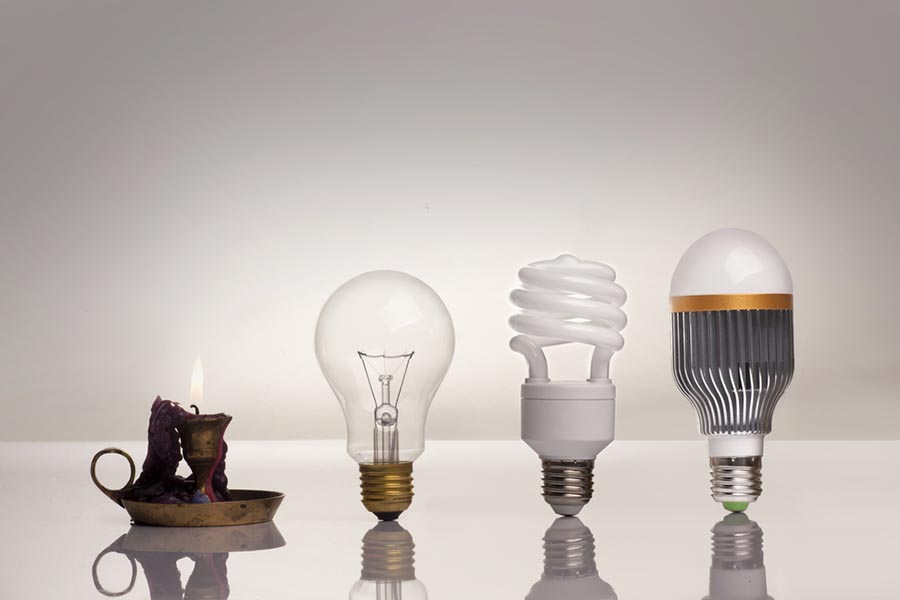LED Lighting: A Sustainable and Efficient Lighting Solution
Introduction
In today’s world, LED lighting has solidified its position as a leading technology in the lighting industry, offering a compelling value proposition as an efficient, cost-effective, and environmentally friendly light source. This innovative technology provides numerous advantages over traditional light sources such as incandescent and CFL lamps, leading to its increasing adoption in residential, commercial, and industrial applications.
A Brief History of LED
The history of LED dates back to the 1960s. The first LEDs emitted weak, monochromatic light and had limited applications. With technological advancements, LEDs have gradually evolved, and today, we witness LEDs with diverse colors, high luminous flux, and long lifespans.
Advantages of LED Lighting
- Low Energy Consumption: LEDs consume significantly less energy compared to traditional lamps. This translates to electricity cost savings and reduced greenhouse gas emissions.
- Long Lifespan: LEDs offer a considerably longer lifespan (up to 25 times) than traditional lamps. This leads to less frequent lamp replacements and lower maintenance costs.
- High-Quality Lighting: LEDs provide high-quality light with no flickering or glare, which is beneficial for eye health.
- Color Versatility: LEDs are available in a wide range of colors, enabling their use in a diverse spectrum of applications.
- Controllability: LEDs are easily adjustable and controllable, allowing for their integration into smart lighting systems.
- Environmental Friendliness: LEDs are free of harmful substances such as mercury and are recognized as an eco-friendly light source.
Applications of LED Lighting
LED lighting finds extensive application in various sectors, including:
- Residential: LED bulbs are widely used in homes due to their energy efficiency, long lifespan, and availability in various colors and styles.
- Commercial: LED lighting is increasingly adopted in commercial spaces such as offices, retail stores, and restaurants due to its energy-saving benefits and ability to create a visually appealing atmosphere.
- Industrial: LED lighting is ideal for industrial facilities due to its durability, high lumen output, and long lifespan, contributing to enhanced productivity and safety.
- Outdoor: LED lighting is extensively used in streetlights, parking lot lights, and other outdoor applications due to its energy efficiency, long lifespan, and durability in harsh weather conditions.
Conclusion
LED lighting offers a compelling value proposition as a sustainable and efficient lighting solution. With its numerous advantages over traditional light sources, LED lighting is poised to continue its growth trajectory and play a pivotal role in shaping the future of lighting.
Additional Information
LED Lighting Technologies
There are various LED lighting technologies available, each with its own unique characteristics and benefits. Some of the most common technologies include:
- Surface-mount device (SMD) LEDs: These LEDs are small and lightweight, making them ideal for use in compact and portable lighting fixtures.
- High-power LEDs: These LEDs offer high lumen output and are suitable for applications requiring high light intensity, such as industrial and outdoor lighting.
- Organic light-emitting diode (OLED) lighting: OLED lighting is a relatively new technology that offers unique advantages such as flexibility, transparency, and wide color gamut.
LED Lighting Trends
The LED lighting market is constantly evolving, with new technologies and trends emerging on the horizon. Some of the key trends to watch include:
- Smart lighting: The integration of LED lighting with smart technologies is gaining traction, enabling advanced control and automation capabilities.
- Human-centric lighting: This emerging approach focuses on tailoring lighting conditions to human needs and preferences, promoting improved well-being and productivity.
- Connected lighting: The increasing adoption of connected lighting solutions allows for real-time monitoring and control of lighting systems, optimizing energy use and maintenance operations.
By embracing LED lighting technologies and trends, we can unlock a brighter future characterized by enhanced energy efficiency, sustainability, and well-being.

Applications of LED Lighting
LED lighting has a wide range of applications across various sectors, including:
Residential Lighting: LED bulbs, LED panels, and LED spotlights are commonly used for home lighting applications.
Office Lighting: LED bulbs, LED panels, and LED ceiling lights are ideal for illuminating office spaces.
Commercial Lighting: LED lamps, LED projectors, and LED linear lights are widely used in shops, restaurants, and hotels to enhance the visual appeal and create a welcoming atmosphere.
Industrial Lighting: LED projectors, LED high bay lights, and LED explosion-proof lights are suitable for lighting factories, warehouses, and hangars, providing high-quality illumination and ensuring safety.
Street Lighting: LED street lights, LED park lights, and LED tunnel lights are energy-efficient and durable solutions for illuminating streets and roads, enhancing visibility and safety for motorists and pedestrians.
Sports Lighting: LED projectors are employed to illuminate stadiums and sports fields, enabling high-quality video broadcasting and ensuring optimal playing conditions for athletes.
Challenges of LED Lighting
Despite its numerous advantages, LED lighting still faces certain challenges, such as:
High Initial Cost: The upfront cost of LED lamps and fixtures is generally higher compared to traditional lighting solutions.
Heat Dissipation: LEDs generate heat during operation, which necessitates proper heat dissipation mechanisms to ensure optimal performance and longevity.
Light Quality: In some cases, the quality of LED light may not be as desirable as natural light, requiring careful selection and application to achieve the desired ambiance.
The Future of LED Lighting
With technological advancements and cost reductions, LED lighting is expected to increasingly replace traditional light sources in various aspects of human life. Emerging innovations in LEDs, such as organic LEDs (OLEDs) and nanotechnology-based LEDs, promise a bright future for the lighting industry, offering enhanced efficiency, sustainability, and customization possibilities.
Additional Information
Benefits of LED Lighting
- Energy Efficiency: LED lighting consumes significantly less energy than traditional light sources, leading to substantial energy cost savings and reduced environmental impact.
- Long Lifespan: LED lamps and fixtures have a considerably longer lifespan than traditional counterparts, reducing the frequency of lamp replacements and maintenance costs.
- Versatility: LED lighting offers a wide range of color temperatures, CRI values, and dimming capabilities, allowing for customized lighting solutions tailored to specific needs and preferences.
- Durability: LED lighting is highly durable and resistant to shock, vibration, and extreme weather conditions, making it suitable for demanding applications.
Key Considerations for LED Lighting Applications
When selecting and implementing LED lighting solutions, it is crucial to consider various factors, including:
- Application requirements: The specific lighting needs of the application, such as light level, color temperature, CRI, and beam angle, should be carefully evaluated.
- Product quality: Choosing high-quality LED products from reputable manufacturers ensures optimal performance, reliability, and longevity.
- Cost-effectiveness: Evaluating the initial investment cost and long-term energy savings potential is essential for making informed decisions.
- Installation and maintenance: Proper installation and regular maintenance of LED lighting systems are crucial to ensure optimal performance and longevity.
By embracing LED lighting technologies and addressing the associated challenges, we can unlock a sustainable and efficient future for lighting, contributing to energy conservation, environmental protection, and enhanced quality of life.




